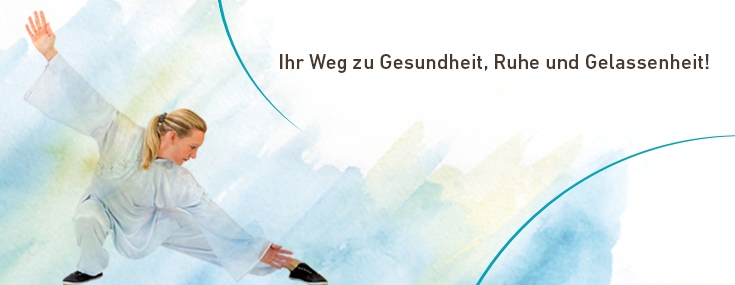Chen Tai Chi
Chen Si Tai Chi Quan
I´m frequently asked “….what is Tai Chi?” …..is it a sport? a selfdefense? or a health-program?
I can only say it has influence from all of it and as you exercise, you will develope in each field. Chen Si means the Style of Chen (to differenciate one style from the other). Tai Chi means the most, the ultimative and Quan means fist. You may translate Tai Chi Quan as fighting in the most highly and ultimative way. Then Chen moves are charecterized by large movements and circles, spiral moves of the hands, as well as jump and kicks. The flow is smooth and keeps flowing from one posture into the other. Most of the moves are practised slow, but some become fast and express explosive power.
The influences to which Taichi was exposed were indeed fighting skills, cultural evolutions and the philosopies of China and India (Buddism, Taoism, Konfuzianism) and very important, the knowledge of health and chinese medicine (accupuncture, tuina). From History has derived the following chronics:
1st generation
firstly named in history is a man called Chen Bu. He was forced by the ruling government in the 14th century to migrate with all his family into the area which is known today as Chen Jia Gou, in the province of Henan. He became famous because he has lead very successfully his family through a devastated time of war, political troubles and starvation. Already during lifetime he was honoured and the name of his village was known as the village of Chen.
9th generation
as a the founder of the Tai Chi in history it is to be mentioned Master Chen Wang Ting, who is said to has developed the movements which we know today as the ‘old frame’. He lived in the 16th century, was experienced in war and battle and settled down in Chen Jia Gou to retire. He studied how an ultimative fighting style should be and introduced the softness into the hardness of the fighting moves. His achievments were kept absolutly secret and were only tought within the Chen Family. Since times were rough at those days, successful fighting was lifesaving for everyone in the family.
14th generation
A major change came in the 18th century under Master Chen Chang Xing. It is said, that a young man started working as a kitchen boy in the Chen family. He was keen in martial arts and secretly watched the training of the family members. He kept practicing by himself what he saw and (un)fortunatly his practice was discovered one day. When the master realised how good this young man has picked up the art, he could not anymore sent him away since he knew too much, neither he was allowed to accept him in the family. The master decided to overrule the tradition and to take on this young enthusiastic man as his diciper. He taught him as much as his own sons – even thou his own family members complained a lot.
Based on the Chen-Style, this young man, called Yang Lu Chan, has developed his own form thereafter, which became famous later as the Yang-Style.
Our forms of the old frame are dating back to Chen Chang Xing. We practise the Yi Lu (First Routine) and the Er Lu (Second Routine). Another routine deriving from the same time is the Xiao Jia (small frame).
17th generation
during the 19th century Taichi became more and more public. One master of his time, Master Chen Fa Ke, was invited to teach Tai Chi in Bejing. His Son, Master Chen Zhao Kui, taught in Bejing and later back in Chen Jia Gou. It was him, who has developed Xin Jia (the new form).
19th generation
Chen Zhao Kui was one of the teacher, who has taught my grandmaster, Master Zhu Tian Cai. Master Zhu was the son of the sister, who married into Zhu family and was called no longer Chen. He learned the art of Tai Chi from the same masters together with his cousins: Chen Xiao Wang, Chen Shen Lei and Wang Si An. These 4 masters are often referred to as the 4 Arhats.
20th generation
my master from Malaysia, Master Wong Seng Choong, taught me this grace- and powerful art. His knowledge of Tai Chi and Kung Fu deemed endless to me. I feel very grateful for the many lessons we had and the knowledge he was willing to share with me during my time in Malaysia.
The art of Tai Chi Quan is a never ending learning progress. with the body movements the mind captures attention on its own way, soul and spirit do follow so in the end, it will influence your whole life.

